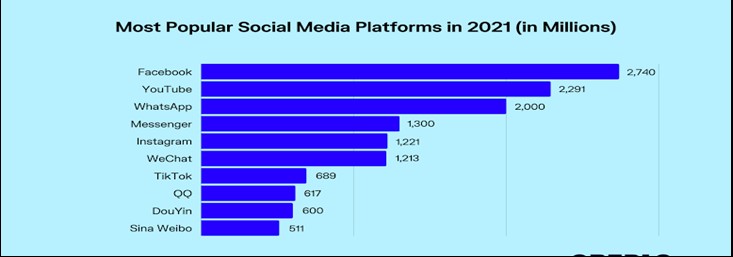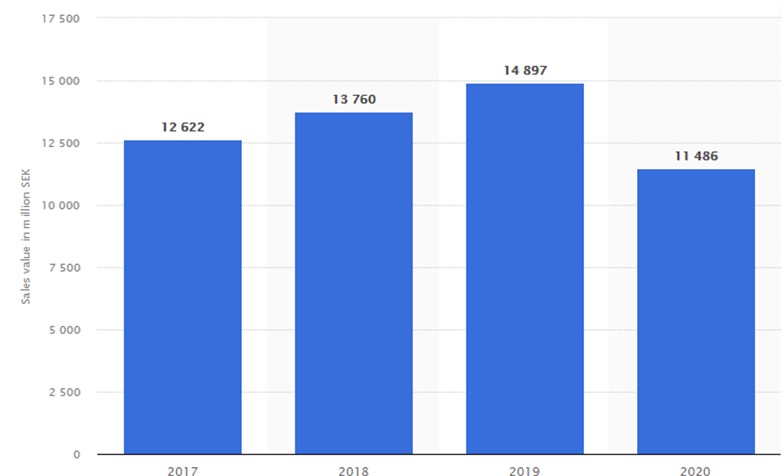Assignment Sample 52308 International Relationship Management
Introduction
Attributes of international relationship management can provide a distinctly positive impact on an organization in terms of achieving service flexibility and ethically informed business practices. In this context, the consideration of an ethical global supply chain might also be achieved by an organization as an integral part of maintaining its service efficiency.
In this regard, the present report will pay attention to defining the aspects of international relationship management on behalf of a European consultancy firm headquartered in Switzerland. The report will include a deliberate understanding of the role of social media platforms in terms of enhancing customer communication along with aiding relationship development with reference to apparel industries.
Moreover, a discussion will also be highlighted in this report with regards to insurance complete adherence to clean, ethically informed, and sustainable business practices along with considering valuable legal constraints associated with workers’ rights within the apparel supply chain industry.
Findings and analysis
Role of social media to enhance communication with external consumers in the apparel market
Communication is referred to as the most important section in growing the business globally. As mentioned by Ahmad et al. (2018), http://52308 International Relationship Management for the business, the profits, and the revenue revolve around customer satisfaction and loyalty. If the organization can effectively communicate with the customers then it becomes easy for the firm to lead in the business as well as in the market. Building a better communication base and relations with the help of social media is the most efficient strategy that can be used by firms (Duane and O’Reilly, 2017).http://52308 International Relationship Management
Retaining customer loyalty in the business is not simple but the help of regular updates and communicating with the audience through the help of different social media platforms can make it more successful than before. According to Bilgin (2018), communication has become a more effective tool, which needs to be focused on by business entrepreneurs. In the given figure below, it is highlighted how customer communication is important for effective results in the firm.

Figure 1: Importance of customer communication
(Source: Rose et al. 2021)
There are several different types of social media platforms, which can be used by European firms to communicate with the target customer in an effective way. Platforms such as Twitter, Facebook, Instagram, LinkedIn, Snapchat, Youtube, and many more. As mentioned by Chen et al. (2020), understanding the platform’s purpose and demographics is important.
In the context of the case study, the European firm is expanding its interest in the fashion market. Having a quick view of the user and the social media platform in which they are operating is essential. In the given below the figure, the most popular social media platform is highlighted along with the number of users operating it.

Figure 2: Most popular social media platform among the population
(Source: Steele et al. 2021)
Social media plays a key role in the case of communications that occur in the business sector. The innovation of technology has taken the population to a new level. As mentioned by Charoensukmongkol and Sasatanun (2017), it has become the most important part of everyone’s life as it provides lots of knowledge and information in just one click.
Social media is an excellent choice considering the communication part. Building a customer relationship is very essential while operating a business. Customers are the backbone of the business as they are the one who helps the firm to take a lead in the market and attain competitive advantages as well (Cao and Sun, 2018).http://52308 International Relationship Management
Any firm can build a better experience for the customers as it provides customer feedback and personalizes the customer’s needs. Sharing user-generated posts and videos, communicating through live sessions, and rewarding the influences can increase the consumer drive for the firm.
Regular communication with the customers increases the performance of the organization along with it provides insight into the demands of the consumers, which will benefit the organization for meeting the expectations of the consumers (Wagner et al. 2017).http://52308 International Relationship Management
Different social media platforms like Facebook and others are playing a leading role to establish prolific communication with the target customers from the business organizational perspective. For example, it can be notified that Facebook registered more than 2.85 billion monthly active users in the present times (Statista, 2021).http://52308 International Relationship Management In this aspect, business promotional activities on Facebook can largely in hence communicate with external customers.
This attribute can also make a brand famous outside of its home market based on cross-border promotional aspects. In accordance with a survey, it has been notified that 90% of teenagers had utilised social media across the globe during 2018 among which 75% were active social media profile holders (Aacap, 2018).http://52308 International Relationship Management It defined greater involvement of the youth with social media platforms.
In this aspect, the European organization might be extensively benefited by actively communicating with the wider youth consumer market with their innovative fashion products. 2019 also experienced extended involvement of the fashion brands with social media platforms.
For evidence, Instagram was notified to be considered for the fashion brands for posting 0.96 posts per day, which also generated a 0.68% engagement rate per post (Statista, 2021). http://52308 International Relationship ManagementThe statistics reveal the significant role of social media platforms as an inclusive mechanism for enhancing communication with external customers.
Relationship development through social media in the apparel industry
The aspects of relationship development have been efficiently conducted through social media platforms as social media plays a leading role to establish distinct interrelation between the business-to-consumer relationship arenas. However, the global apparel industry has been largely attentive to the usage of social media as an integral part of maintaining its relationship development strategy.
The global apparel market revenue was USD 1.46 trillion in 2020 which is also expected to reach USD 2.25 trillion by the end of 2021 (Shahbandeh, 2021). http://52308 International Relationship management in accordance with research, it was noticed that 74% of the customers usually depend on social media platforms for guiding their purchases. These statistics reveal the greater significance of the social media process in terms of maintaining extended relationship development attributes in the business-to-customer relationship arena.
On the other hand, different social media platforms are not used to focusing on providing deliberate user experiences due to which business organizations largely prefer social networks as an integral part of promoting their products and services. For example, the context of Twitter can be considered, which rebranded its suit-off ad products.
The consideration of emerging augmented reality shopping tools is also considered by Snapchat (Enberg, 2021). http://52308 International Relationship ManagementInstagram is also rolling out reels ads. These market trends are highly preferred by worldwide consumers based on which customer satisfaction has been achieved through social media in the area of business to customer relationship maintenance.

Figure 3: Growth of social media marketing rate in the US
(Source: Statista, 2021)
However, social media platforms are widely utilized by business organizations as the intermediary channel for promoting their products in front of the wider consumer market. For example, the context of social media marketing usage can be considered. During this present year, 91.9% of US marketers from different organizations use social media for marketing purposes. However, it is also expected to be 92.1% in the next year (Statista, 2021). http://52308 International Relationship Management
The aforementioned figure also illustrates social media marketing penetration in the US market throughout the last decade where gradual stability and increment can be notified in the rate of social media marketing usage. These statistics prove the greater significance of social media channels for considering relationship development. The European consultancy firm can undertake the option of social media marketing in order to develop its relationship with potential consumers across the apparel industry (Shareef et al. 2019).http://52308 International Relationship Management
Moreover, the mentioned innovation through social media platforms under the shape of augmented reality shopping tools and innovative advertisements can also generate a positive influence on customer purchasing intention. The European firm can open official social media pages on different platforms in order to promote their products with innovative user experiences. Because of this, extensive relation development attributes could be fulfilled by the organization in the business-to-consumer relationship arena concerning the apparel sector.
Adherence to clean, ethical and sustainable business practices
Distinctive cleanliness, ethical attributes, and sustainable practices should be considered in order to empower the brand recognition of supply chain activities. The traditional fashion supply chains across the world experienced the usage of 8000 various synthetic chemicals along with massive amounts of water wasted in recent times (Stanton, 2020).http://52308 International Relationship Management In this context, many fashion brands do have not perfect practices of sustainable supply chains in the eyes of consumers.
Apart from that, the fashion industry also makes a decent contribution to climate change. According to research, it has been noticed that the fashion industry was responsible for around 2.1 billion metric tons of greenhouse gas emissions in 2018, which is also considered to be 4% of the global total (Berg et al. 2020). http://52308 International Relationship ManagementThe statistics reveal unsustainable circumstances for fashion enterprises concerning supply chain operations.
However, the private sector fashion enterprises must focus on the consideration of outlining green supply chain activities as an integral part of considering sustainable business practices. Efficient waste management systems should be added by the private sector fashion enterprises for enlarging the cleanliness and sustainability of their global supply chain in activities.
In the form of evidence, it has been noted that around 2 million tonnes of clothing from the UK fashion industry are purchased every year among which around 50% are being discarded in landfills (Dissanayake and Sinha, 2021).http://52308 International Relationship Management In this context, a toxic and adverse environmental impact can be suspected from the UK fashion sector.
In this regard, the private sector fashion companies should look forward to utilizing the 3R of sustainability in their supply chain operations. The three Rs of sustainability define reduce, reuse, and recycle (Mahat et al. 2019).http://52308 International Relationship Management This practice can ensure sustainable waste management practices along with protecting the environment with a priority approach.
Moreover, lean management practices are likely to be aligned with the industrial global supply chain activities, which can be supportive of the features of both cost and time optimization (Jakhar et al. 2018).http://52308 International Relationship Management In this regard, the inclusion of advanced technologies like augmented reality, virtual reality, Big Data analytics, artificial intelligence, machine learning, and others can be considered by the private sector fashion enterprises as an integral part of ensuring reduced manual operational costs in their supply chain management systems.
On the contrary, the mentioned technologies can also improve organizational productivity to a fair extent. Based on this attribute, the private sector fashion service providers might be able to efficiently analyze the current market and industry trends according to which best quality products might be offered by them to potential customers.
With the improvement of productivity and mitigation of market demands at a comparatively low operational cost, supply chain sustainability can be ensured by the private sector fashion companies (Kusi-Sarpong et al. 2019).http://52308 International Relationship Management
Ethical supply chain management refers to the provision of proper treatment and payment for individuals serving across the industry. Moreover, the ethical supply chain activities in the private sector fashion companies also reflect fulfilling employee health and safety as an integral part of maintaining ethical practices. The private sector fashion companies can outline strict policies and innovative health and wellbeing programs concerning their employee health welfare across the supply chain operations.
On the other hand, research clarified the willingness of worldwide consumers in terms of paying more for goods and products manufactured under shape of ethical practices (Fibre2fashion, 2021).http://52308 International Relationship Management Increasing awareness is also notified regarding the prevention of environmental hazards involved across the fashion and apparel industry. Concerning this evidence, the private sector fashion companies will have to look for involving a supplier code of conduct with the establishment of unequivocal standards for the vendor (Fibre2fashion, 2021).http://52308 International Relationship Management
The quality assurance standards of the suppliers should also be fulfilled. The global apparel and fashion retailers are often notified to employ external or internal social compliance auditors to efficiently inspect and receive reports regarding actual facts from the factory. This option should also be considered by the private sector fashion companies in order to comply with efficient surveillance of the ethical practices in supply chain activities.
Legal compliances in consideration to worker’s rights within the apparel supply chain industry
The legal compliances usually provide greater significance in terms of maintaining ethical operational practices associated with workers’ rights and others. However, the fashion supplying industry has witnessed different issues in association with workers’ rights in different markets. For example, the context of a renowned fashion service provider Marks and Spencer can be considered.
The company was alleged to utilize child workers in different country markets. In the Indonesian market, the company was accused of providing less payment to the child laborers working for 10 hours a day. Moreover, the supplier workshops of Marks and Spencer are also served Syrian refugee children (Lusher, 2016).
http://52308 International Relationship Management Similar consequences can also be noticed from the perspective of iconic fashion brands like Asos and others as the company also processed child workers in their supply chains (Webb, 2016).http://52308 International Relationship Management
It has been notified that child labor and entire kinds of relational abuses are very common in the unregulated overseas factories concerning the fashion industry supply chain across the globe.
A range of manufacturing hubs from the fashion enterprises and their contractors often look forward to taking advantage of their employees and putting them to work for comparatively little pay (Stanton, 2020).http://52308 International Relationship Management Horrible workplace environments are also provided which creates a potential risk to the employees’ own health.
In accordance with the most recent global estimates, it was observed that 2.78 million work-related deaths are recorded each year among which 2.4 million cases are associated with occupational diseases (ILO, 2021). http://52308 International Relationship ManagementThe supplier code of conduct should be outlined by the private sector fashion enterprises across their global supply chain activities.
It can be utilized as a voluntary regulator in major in terms of promoting International labor standards across the factories of potential suppliers. Moreover, the clothing manufacturers are also notified to employ low-paid young workers in developing countries constantly working for long hours in an unhygienic workplace atmosphere. The supplier’s code of conduct can successfully resolve these issues.
Apart from that, the private sector fashion companies will have to look for adhering to ethical practices in their supply chain activities concerning workers’ rights. The International labor law should be applicable in this context as a valuable legal constraint, which can ensure the rights and duties of employees and employers in the workplace.
Apart from that, the International labor standards on occupational safety are likely to be considered by the private sector fashion enterprises in order to abide by the legal compliances related to all operational practices associated with worker rights in the fashion industry supply chain (ILO, 2021). http://52308 International Relationship Management
This attribute can ensure the provision of a hygiene workplace condition for the employees. Moreover, the standards for health and safety have also set forth the principle according to which workers should be protected from disease and sickness, injuries, and others arising from their employment.
Recommendations
In relation to the above discussion, the following recommendation can be considered by the European consultancy firm.
- External clients may want to develop a chatbot to increase their efficiency in customer service along with this it can help them to communicate with customers faster than before
- External clients should have to create their own webpage also increase the customer insight as well as a chance to advertise their brand online
- External clients have to pay attention on starting a green business with the help of improved sustainability can also be beneficial for the external clients as it helps to attract more customers and to meet the expectations of the shareholders
- External clients can utilize sustainable fabrics and materials that can prevent the environment to get harmed by the harsh materials and using fabrics such as pure organic cotton, linen, Tencel, and hemp could work in this
- External clients should focus on the workers and provide a better environment as well as physical care for the laborers working for them in the company
- External clients should look after the shipping techniques used for the products and implementing rail and ocean shipping helps in reducing the margin of the carbon footprint from the company as well
- External clients should take a step in regarding child labor and sign a code of conduct to ensure that no children are there working in the factories
- External clients should take a look while shipment that the shipping boxes which are being used should be recycled boxes for improving sustainability in the business
- External clients may pay attention to the customer feedback for improving the business and regularly communicate with them for better understanding of customer needs and demands
- External clients majorly look after the designs which are produced by the company and develop them in respect to attract more customers through the help of making more creative and innovative designs in the market
Conclusion
In the context of the overall discussion, the study is mainly focused in the terms of managing international relationships. Implementing specific measures to build a strong and effective international management is essential to provide success to the company. In maintaining international relations, the study has displayed some major attributes, which will effectively help the European consultancy firm.
The study has discussed the role of social media and its importance in building better communication with external customers in the apparel industry along with maintaining a clean and ethical business across the company. Adding to this, it also illustrates the importance of sustainability in the business as well as in the supply chain along with legal compliances in context to the rights of the workers in the supply chain industry. Lastly, the study has provided some significant recommendations for maintaining better growth in production by maintaining a sustainable clothing business in the market.
Reference
AACAP, 2018. Social Media and Teens. [Online]. Available at: <https://www.aacap.org/AACAP/Families_and_Youth/Facts_for_Families/FFF-Guide/Social-Media-and-Teens-100.aspx> [Accessed 15 August 2021]
Ahmad, S.Z., Ahmad, N. and Bakar, A.R.A., 2018. Reflections of entrepreneurs of small and medium-sized enterprises concerning the adoption of social media and its impact on performance outcomes: Evidence from the UAE. Telematics and Informatics, 35(1), pp.6-17.
Berg, A., Granskog, A., Lee, L and Magnus, K., 2020. Fashion on climate [Online]. Available at: <https://www.mckinsey.com/industries/retail/our-insights/fashion-on-climate> [Accessed 15 August 2021]
Bilgin, Y., 2018. The effect of social media marketing activities on brand awareness, brand image and brand loyalty. Business & Management Studies: An International Journal, 6(1), pp.128-148.
Cao, X. and Sun, J., 2018. Exploring the effect of overload on the discontinuous intention of social media users: An SOR perspective. Computers in human behavior, 81, pp.10-18.
Charoensukmongkol, P. and Sasatanun, P., 2017. Social media use for CRM and business performance satisfaction: The moderating roles of social skills and social media sales intensity. Asia Pacific Management Review, 22(1), pp.25-34.
Chen, R.R., Davison, R.M. and Ou, C.X., 2020. A symbolic interactionism perspective of using social media for personal and business communication. International Journal of Information Management, 51, p.102022.
Dissanayake, D.G.K. and Sinha, P., 2012. Sustainable waste management strategies in the fashion industry sector. International Journal of Environmental, Cultural, Economic and Social Sustainability, 8(1), pp.77-90.
Duane, A. and O’Reilly, P., 2017. A conceptual stages-of-growth model for managing a social media business profile. Irish Journal of Management, 36(2), pp.78-98.
Enberg, J., 2021. Social Media Update Q2 2021. [Online]. Available at: <https://www.emarketer.com/content/social-media-update-q2-2021> [Accessed 15 August 2021]
Fibre2fashion, 2021. Doing something Different ; Doing something Ethical. [Online]. Available at: <https://www.fibre2fashion.com/industry-article/6737/doing-something-different> [Accessed 15 August 2021]
ILO, 2021. International Labour Standards on Occupational Safety and Health. [Online]. Available at: <https://www.ilo.org/global/standards/subjects-covered-by-international-labour-standards/occupational-safety-and-health/lang–en/index.htm> [Accessed 15 August 2021]
Jakhar, S.K., Rathore, H. and Mangla, S.K., 2018. Is lean synergistic with sustainable supply chain? An empirical investigation from emerging economy. Resources, Conservation and Recycling, 139, pp.262-269.
Kusi-Sarpong, S., Gupta, H. and Sarkis, J., 2019. A supply chain sustainability innovation framework and evaluation methodology. International Journal of Production Research, 57(7), pp.1990-2008.
Lusher, A., 2016. Refugee children ‘making Marks & Spencer clothes’ in Turkish factories, BBC claims. [Online]. Available at: <https://www.independent.co.uk/news/child-labour-sweatshops-refugees-marks-and-spencer-panorama-clothes-sold-uk-britain-british-high-street-zara-next-mango-asos-working-conditions-foreign-factories-low-paid-workers-modern-slavery-exploitation-minimum-wage-a7376706.html> [Accessed 15 August 2021]
Mahat, H., Hashim, M., Saleh, Y., Nayan, N. and Norkhaidi, S.B., 2019, June. Environmental sustainability knowledge, attitude and practices among pre-school students. In IOP Conference Series: Earth and Environmental Science (Vol. 286, No. 1, p. 012003). IOP Publishing.
Rose, S., Fandel, D., Saraeva, A. and Dibley, A., 2021. Sharing is the name of the game: Exploring the role of social media communication practices on B2B customer relationships in the life sciences industry. Industrial Marketing Management, 93, pp.52-62.
Shahbandeh, M., 2021. Revenue of the apparel market worldwide from 2012 to 2025. [Online]. Available at: <https://www.statista.com/forecasts/821415/value-of-the-global-apparel-market> [Accessed 15 August 2021]
Shareef, M.A., Mukerji, B., Dwivedi, Y.K., Rana, N.P. and Islam, R., 2019. Social media marketing: Comparative effect of advertisement sources. Journal of Retailing and Consumer Services, 46, pp.58-69.
Stanton, A., 2020. What Is A Supply Chain And How Can It Be Ethical?. [Online]. Available at: <https://www.thegoodtrade.com/features/ethical-supply-chain> [Accessed 15 August 2021]
Statista, 2021. Most popular social networks worldwide as of July 2021, ranked by number of active users. [Online]. Available at: <https://www.statista.com/statistics/272014/global-social-networks-ranked-by-number-of-users/> [Accessed 15 August 2021]
Statista, 2021. Social media marketing usage rate in the United States from 2013 to 2022. [Online]. Available at: <https://www.statista.com/statistics/203513/usage-trands-of-social-media-platforms-in-marketing/> [Accessed 15 August 2021]
Statista, 2021. Social media metrics for global fashion brands in 2019. [Online]. Available at: <https://www.statista.com/statistics/442817/fashion-brand-social-media-metrics/> [Accessed 15 August 2021]
Steele, T.N., Galarza-Paez, L., Aguilo-Seara, G. and David, L.R., 2021. Social media impact in the Match: A survey of current trends in the United States. Archives of plastic surgery, 48(1), p.107.
Wagner, T.F., Baccarella, C.V. and Voigt, K.I., 2017. Framing social media communication: Investigating the effects of brand post appeals on user interaction. European Management Journal, 35(5), pp.606-616.
Webb, J., 2016. Child Workers Found In Clothing Supply Chain: ASOS, Marks & Spencer Implicated. [Online]. Available at: <https://www.forbes.com/sites/jwebb/2016/10/25/child-workers-found-in-clothing-supply-chain-asos-marks-spencer-implicated/?sh=3597d8b14b12> [Accessed 15 August 2021]


